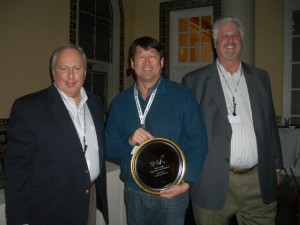With the continuing system enterprise data growth rates, which in some areas may even exceed 100% year over year, according to the IDC, many technical approaches to reducing overall storage needs are being investigated. The following is a short review of the areas in which interesting technical solutions have been implemented. One primary technique which has been receiving a lot of attention involves ‘Deduplication’ technology, which can be divided into many areas. Some papers covering deduplication overviews are currently available in the DPCO presentation & tutorial page, at http://www.snia.org/forums/dpco/knowledge/pres_tutorials. A new presentation by Gene Nagle (the current chairman of the DPCO) and Thomas Rivera will be posted there soon, and will be presented at the upcoming spring 2012 SNW conference.
Other areas which have been investigated involve storage management, rather than concentrating on data reduction. This involves implementing storage tiers, as well as creating new technologies, such as Virtual Tape Libraries and Solid State Devices, in order to ease the implementation of various tiers. Here are the areas which seem to have had quite a bit of activity.
Data reduction areas
• Compression
• Thin Provisioning
• Deduplication, which includes
o File deduplication
o Block deduplication
o Delta block optimization
o Application Aware deduplication
o Inline vs. Post processing deduplication
o Virtual Tape Library (VTL) deduplication
Storage Tiering
Tiered storage arranges various storage components in a structured organization, in order to have data storage automatically migrated between storage components which have significantly different performance as well as cost. These components are quite variable, based on performance characteristics and throughput, location with regards to the servers, overall cost, media types, and other issues. The policies based on these parameters which are developed to define each tier will have significant effects, since these policies determine the movement of data within the various tiers, and the resulting accessibility of that data. An overview of Storage Tiering, called “What’s Old Is New Again”, written by Larry Freeman, is available in this DPCO blog, and he will also be giving a related presentation at the Spring 2012 SNW.
SSD and Cache Management
Solid state memory has become quite popular, since it has such high retrieval performance rate, and can be used both as much larger cache implementation than before, as well as the top level for tiered storage. A good discussion of this is at http://www.informationweek.com/blog/231901631
VTL
Storage presented as a virtual tape library will allow integration with current backup software, using various direct attach or network connections, such as SAS, FibreChannel, or iSCSI. A nice overview is at http://searchdatabackup.techtarget.com/feature/Virtual-tape-library-VTL-data-deduplication-FAQ.
Thin Provisioning
Thin provisioning is a storage reduction technology which uses storage virtualization to reduce overall usage; for a brief review, see http://www.symantec.com/content/en/us/enterprise/white_papers/b-idc_exec_brief_thin_provisioning_WP.en-us.pdf
Deduplication Characteristics & Performance Issues
When looking at the overall coverage of deduplication techniques, it appears that file level deduplication can cover a high percentage of the overall storage, which may offer a simpler and quicker solution for data reduction. Block level deduplication may introduce bigger performance and support issues and will add a layer of indirection, in addition to de-linearizing data placement, but it is needed for some files, such as VM & filesystem images. In addition, when performing deduplication on backup storage, this may not be a severe issue.
One deduplication technique called sparse file support, where chunks of zeros are mapped by marking their existence in metadata, is available in NTFS, XFS, and the ext4 file systems, among others. In addition, the Single Instance Storage (SIS) technique, which replaces duplicate files with copy-on-write links, is useful and performs well.
Source side deduplication is complex; storage side deduplication is much simpler, so implementing deduplication at the storage site, rather than at the server site, may be preferable. In addition, global deduplication in clustered environments or SAN/NAS environments can be quite complex, and may lead to fragmentation, so local deduplication, operating within each storage node, is a simpler solution. It uses a hybrid duplicate detection model aiming for file-level deduplication, and reverting to segment level deduplication only when necessary. This reduces the global problems to simple routing issues, so that the incoming files are routed to the node which has the highest likelyhood of possessing a duplicate copy of the file, or of parts of the file.
See “A Study of Practical Deduplication”, given the best paper award at USENIX Fast 2011: http://www.usenix.org/events/fast11/tech/full_papers/Meyer.pdf. It has references to other papers which discuss various experiments and measurements with deduplication and other data reduction techniques. Also, look at various metrics, discussed in “Tradeoff in Scalable Data Routing for Deduplication Clusters” at http://www.usenix.org/events/fast11/tech/full_papers/Dong.pdf
